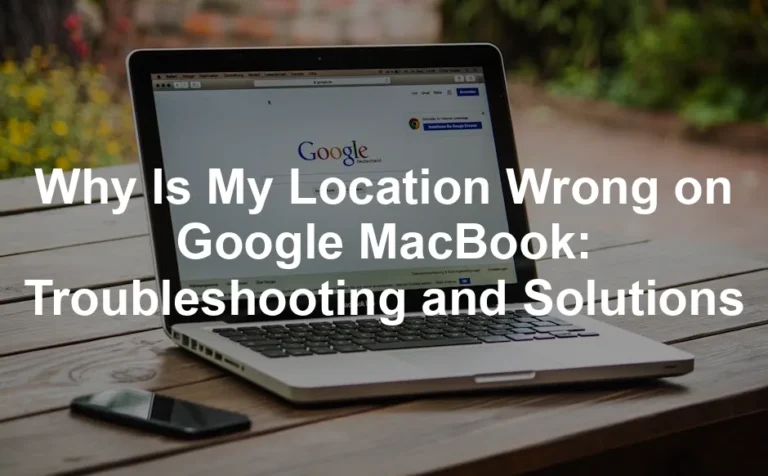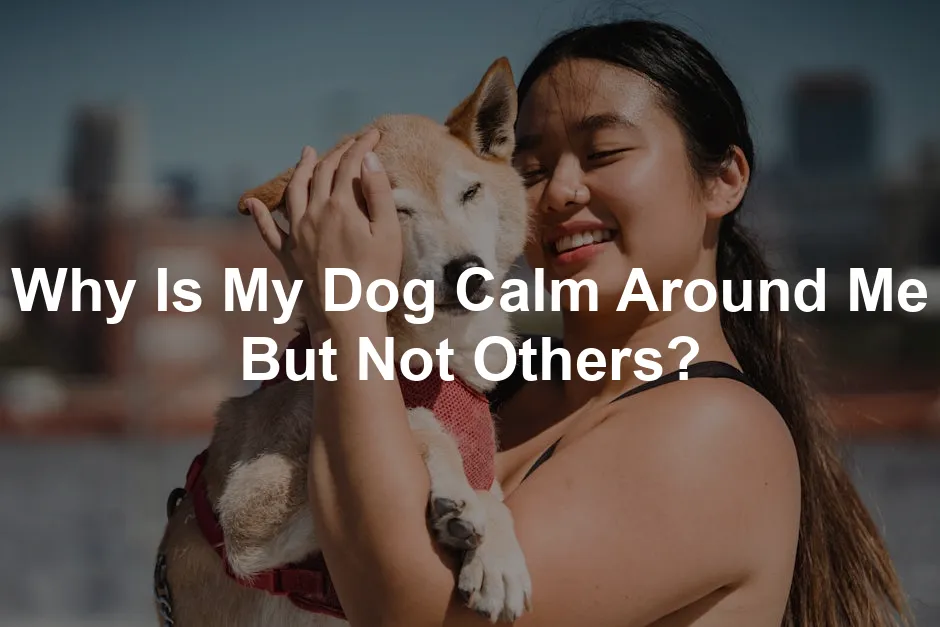
Why Is My Dog Calm Around Me But Not Others?
Introduction
Have you ever noticed how your dog behaves differently around you compared to others? This is a common observation among dog owners. Dogs often display varying levels of calmness, depending on their familiarity with a person. The emotional bond between dogs and their owners plays a significant role in this behavior.
In this article, we will explore the reasons behind your dog’s calm demeanor around you and their more anxious reactions to unfamiliar faces. Understanding this behavior can help strengthen your relationship and improve your dog’s interactions with others.
Summary and Overview
We will discuss several key points regarding dog behavior. First, we will highlight the importance of understanding your dog’s emotions and how they affect their responses. Next, we’ll explore how dogs pick up on human emotions and how this can lead to different behaviors around familiar versus unfamiliar people. Finally, we will offer practical insights to help create positive experiences for your dog when meeting new individuals.
Understanding dog behavior is crucial for fostering better relationships between dogs and their owners. When you comprehend why your dog reacts a certain way, it becomes easier to manage their behavior effectively. Dogs are incredibly sensitive to our emotions, and they often mirror our feelings. This connection influences their calmness or anxiety levels.
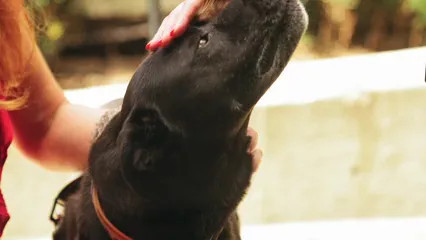
If you’re looking to enhance your training sessions, consider using a Dog Training Clicker. This handy tool makes it easier to mark the desired behavior, so your dog knows exactly what you want them to do. Plus, it’s a fun way to engage with your pup!
Let’s dive into the fascinating world of canine emotions and sensitivity.
Understanding Dog Behavior
Canine Emotions and Sensitivity
Dogs experience a range of emotions, much like humans do. They can feel joy, fear, trust, and even empathy. This emotional capacity allows them to bond closely with their owners. A dog’s emotional state can be greatly affected by the feelings of the humans around them. If you’re feeling relaxed, your dog is likely to feel the same.
Conversely, if you are anxious or stressed, your dog may pick up on those feelings and become uneasy. This sensitivity makes emotional connections vital for your dog’s behavior. A dog that feels secure in its environment will generally exhibit calmness, especially around familiar faces.
Establishing a strong emotional bond with your dog can significantly impact their behavior. By fostering trust and familiarity, you help your furry friend feel more at ease, not just with you but also with others. This understanding lays the groundwork for practical solutions that will enhance your dog’s interactions with new people.
Consider rewarding your dog with some delicious Dog Treats for Training. These treats can motivate your dog during training sessions and reinforce calm behaviors when they’re around others. A happy dog equals a happy owner!
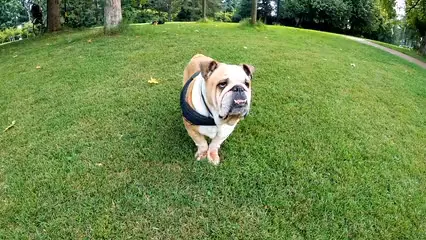
Factors Contributing to Calmness Around Owners
The Role of Comfort
Dogs thrive on familiarity. When they know their owner’s habits, they feel secure. This sense of security often translates into calm behavior. For instance, your dog may be relaxed at home, lying on their favorite spot, while they might appear anxious in unfamiliar places. At home, the routine is predictable. Your dog knows when it’s time to eat, play, or go for a walk. This comfort allows them to relax fully.
Think about how your dog behaves during your regular activities. Whether you’re watching TV or cooking, they often settle nearby. This is a clear sign that their comfort level is high. In contrast, when faced with new people or environments, their uncertainty can lead to anxious reactions.

To enhance their comfort, consider providing a cozy Dog Bed. A good bed can be their safe haven, helping them feel secure and relaxed, which is essential for their overall well-being.
Building Trust
Trust is a crucial element in the dog-owner relationship. Daily interactions like feeding, playing, and training create a bond. The more time you spend together, the more trust your dog develops. This bond fosters a sense of safety. When your dog trusts you, they are more likely to feel calm around you.
Positive reinforcement also plays a major role. When you reward your dog for good behavior, they learn that being calm brings positive outcomes. If they see you as a source of fun and comfort, they are more likely to remain relaxed in your presence. On the flip side, without consistent interactions, your dog may not feel the same level of trust with others.
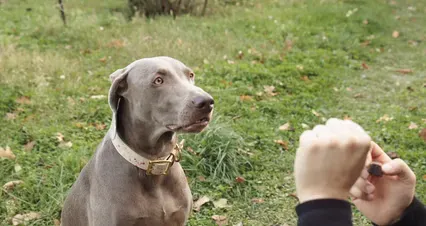
For added safety during outings, consider a Dog Leash with Reflective Stitching. This will help keep your furry friend safe during evening walks while also reinforcing that trust you’ve built together.
Sensitivity to Human Emotions
Dogs are incredibly perceptive. They can sense and mirror their owner’s emotions. If you’re feeling calm and relaxed, your dog is likely to mirror that energy. Conversely, if you’re anxious or stressed, your dog may become unsettled.

Imagine a scenario where you’re meeting new people. If you feel nervous, your dog may pick up on this anxiety, leading them to react with unease. A relaxed owner creates a calmer atmosphere. This emotional connection highlights the importance of maintaining a positive demeanor around your dog and others.
Why Dogs Might Be Anxious Around Others
Lack of Familiarity
Dogs often feel uncertain around strangers. This uncertainty can lead to cautious behavior. When meeting new people, their instincts kick in. They might perceive unknown individuals as potential threats. Gradually introducing your dog to new faces can build their confidence. Start with short interactions, allowing your dog to adjust. Over time, they can learn that new people can be friendly.
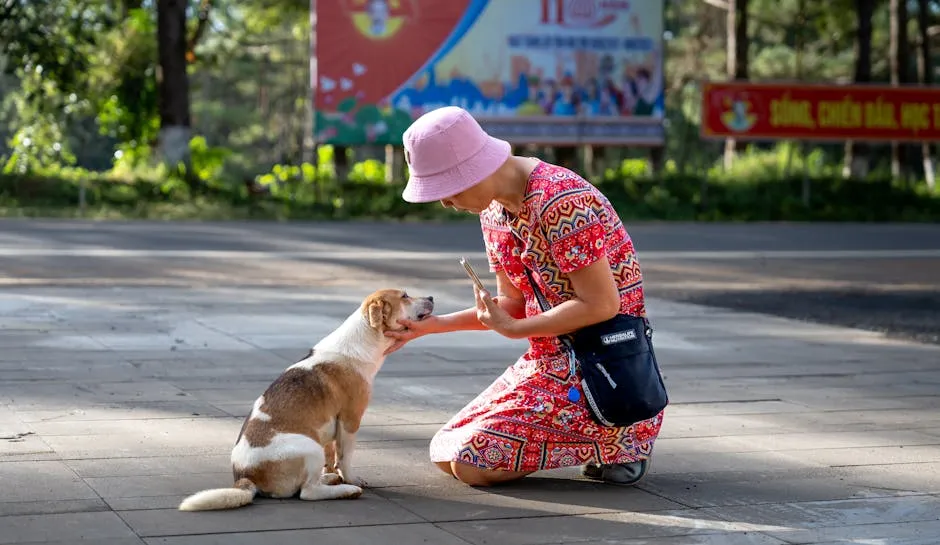
Different Interaction Styles
Human behavior greatly impacts a dog’s comfort level. Some people may approach dogs with assertiveness, which can feel intimidating. Unpredictable movements or loud voices might also cause anxiety. Think about how your dog reacts to different people. A calm, gentle demeanor often puts them at ease. Conversely, if someone is overly energetic, your dog may become anxious. Pay attention to how others interact with your dog. Adjusting their approach can make a significant difference.
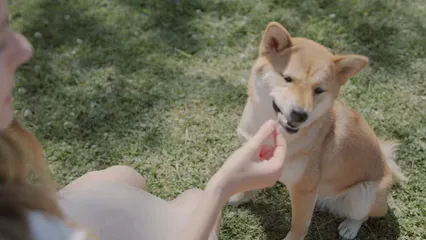
Past Experiences with People
A dog’s history with people shapes their current behavior. If they had negative encounters, they might be wary of similar individuals. For instance, a dog that was mistreated by a certain type of person may react defensively. Understanding your dog’s past experiences is crucial. It helps in addressing their anxiety. If your dog shows signs of fear, acknowledge their feelings. You can help them through positive reinforcement and patience. By creating positive associations, you can help your dog feel secure around new people.
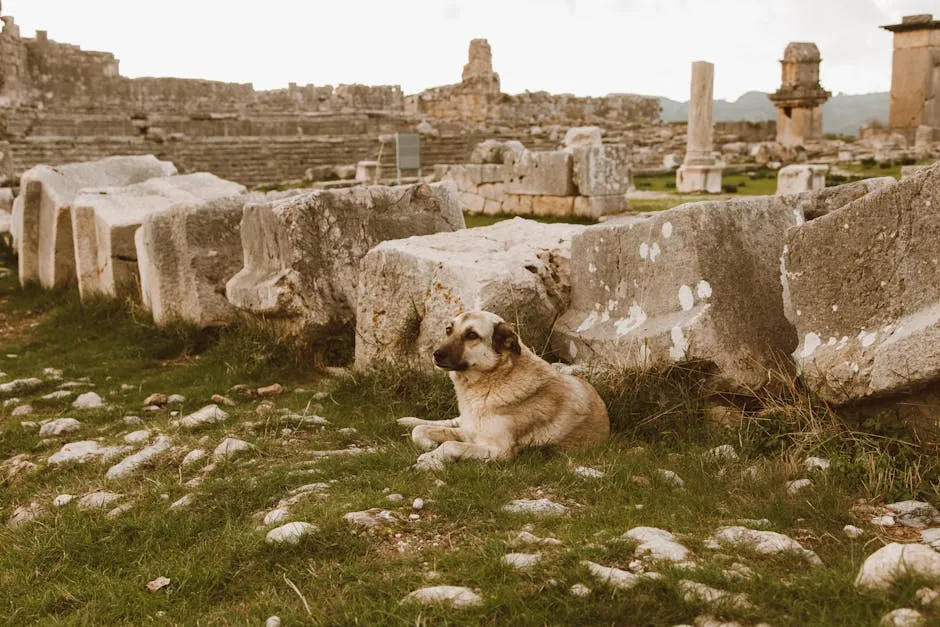
Practical Tips to Help Your Dog Feel Calm Around Others
Training Commands
Teaching your dog basic commands can be a game changer. Commands like “sit”, “stay”, and “come” help redirect their focus during anxious moments. Start by practicing these commands in a calm setting. Gradually introduce distractions, such as new people. Each time your dog responds correctly, reward them with treats or praise. This positive reinforcement builds their confidence and encourages calm behavior around others.

Consider using a clicker for training. This method can effectively mark the desired behavior, making it clear to your dog what you expect. Consistency is key. Regular training sessions will reinforce their learning and help them feel more secure when interacting with unfamiliar faces.
Keep your dog’s mind engaged with an Interactive Dog Toy. These toys not only provide entertainment but also stimulate your dog’s brain, which can help reduce anxiety and keep them calm when meeting new people.
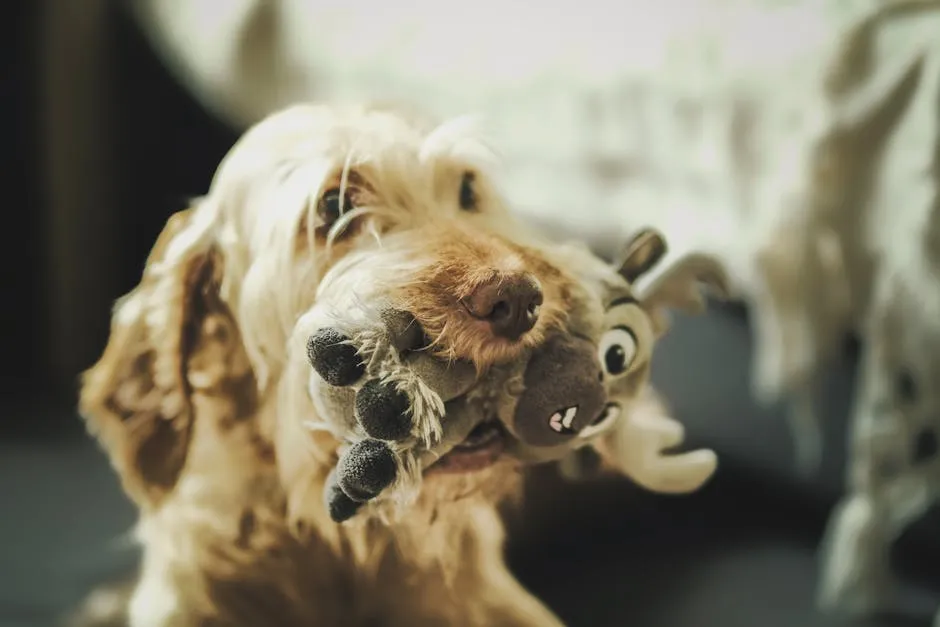
Gradual Exposure to New People
Introducing your dog to new people should be a gradual process. Start by allowing your dog to observe from a distance. This distance should be comfortable for them. As your dog becomes more relaxed, slowly decrease the distance. If they show signs of anxiety, like barking or trying to retreat, take a step back.
Encourage positive interactions by having new people offer treats or toys. This creates a positive association with newcomers. Over time, your dog will learn that new people can be friendly and non-threatening. Always monitor your dog’s comfort level and adjust the pace as needed. Patience is essential in this process.
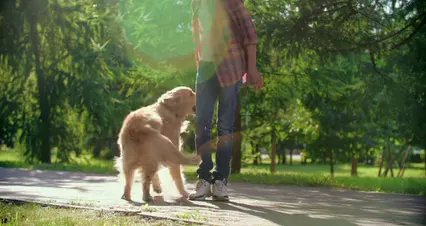
Maintaining a Calm Demeanor
Your emotional state significantly impacts your dog’s behavior. If you feel anxious or stressed, your dog may mirror those feelings. It’s crucial to maintain a calm demeanor during social interactions. Take deep breaths and speak in a soothing tone. This helps create a relaxed atmosphere for both you and your dog.
Practice mindfulness in your body language as well. Avoid sudden movements or loud noises that could startle your dog. Instead, approach new situations with a relaxed posture. Remember, your dog looks to you for cues on how to react. By staying calm, you encourage your furry friend to feel secure and at ease around others.
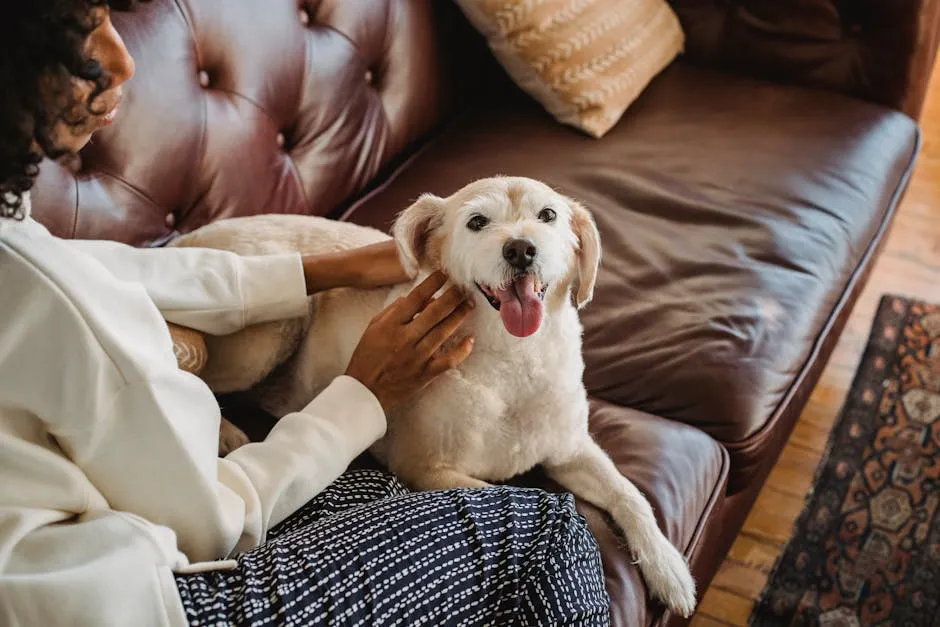
FAQs
Why does my dog behave differently around strangers than with me?
Your dog feels more relaxed with you due to familiarity and deeper trust. They may perceive strangers as potential threats, leading to anxious behavior.
How can I help my dog feel more comfortable around new people?
Gradual exposure is effective. Allow your dog to meet new people slowly and use positive reinforcement to reward calm behavior.
What signs indicate that my dog is anxious around others?
Look for signs like excessive barking, pacing, hiding, or tail tucking. These behaviors often show that your dog is feeling stressed.
Can a dog’s breed influence its behavior around unfamiliar people?
Yes, some breeds are naturally more reserved or sensitive. Understanding breed tendencies can help you manage their reactions.
What should I do if my dog reacts aggressively around strangers?
It’s best to consult a professional trainer or behaviorist. They can provide tailored strategies to address your dog’s aggressive behavior effectively.
Please let us know what you think about our content by leaving a comment down below!
Thank you for reading till here 🙂
And if you’re a pet owner looking for additional tools, consider picking up a Dog First Aid Kit. It’s always better to be prepared for any situation that might arise with your furry friend!
Lastly, don’t forget to pamper your pup with a Dog Cooling Mat this summer! It will keep them cool and comfortable during those hot days.
All images from Pexels



